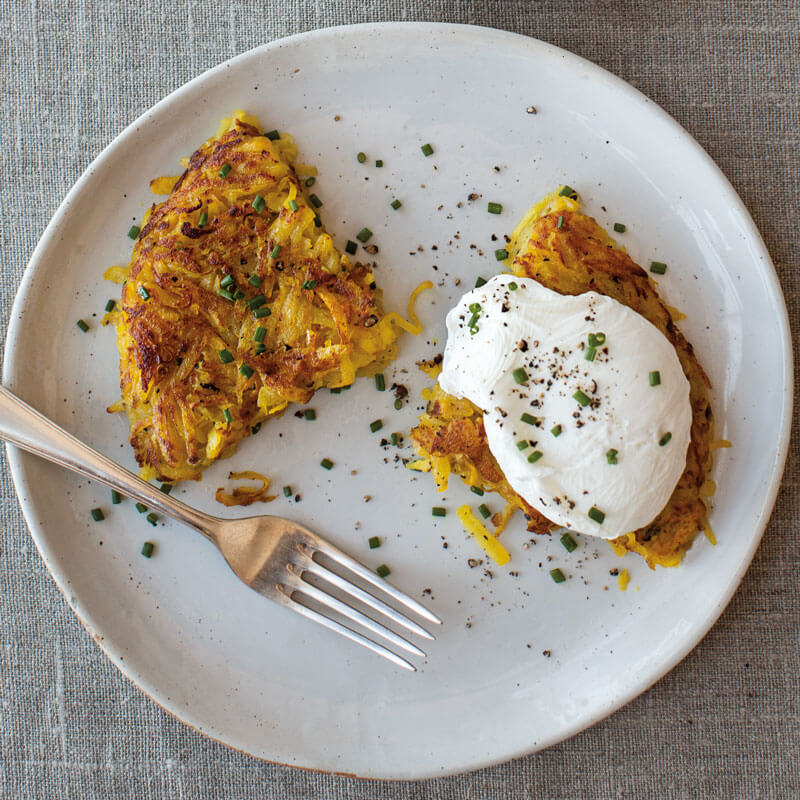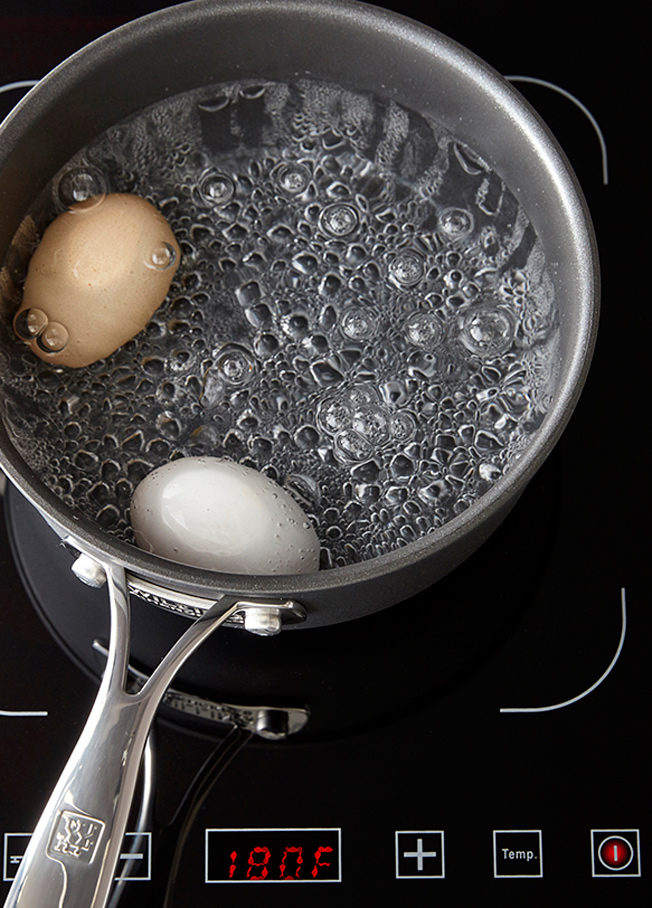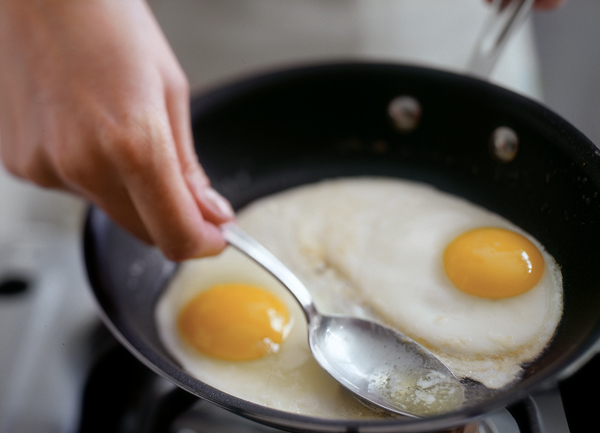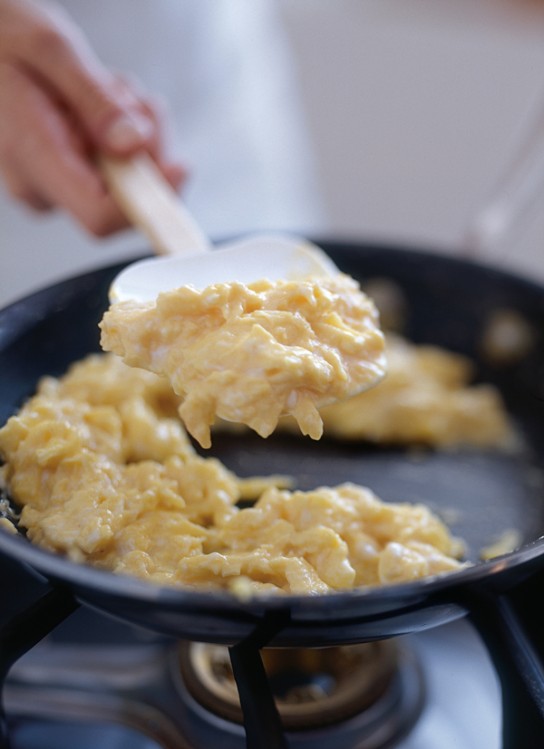
If you’re going to make eggs, you’ve got to make ’em right—and for Williams Sonoma Chefs’ Collective member Ashley Christensen, that means starting with the right tools.

Christensen, who is the James Beard Award-winning chef and proprietor of AC Restaurants in Raleigh, North Carolina, has a put a distinct mark on the culinary map with her version of refined Southern comfort food at destinations like Poole’s Diner, Beasley’s Chicken + Honey, Death & Taxes and more. She’s become known around North Carolina parts for countless dishes, including smoky, paprika-laced deviled eggs, pimento cheese made with cider mayo and Eggs Beasley (a brunch dish featuring poached eggs, creamed collards and grilled cornbread).
Chef Ashley’s best advice is to start with tried-and-true nonstick cookware; she likes Zwilling’s Forte line, which is made with a revolutionary new nonstick coating that’s 20 times more durable and 10 times more scratch resistant than traditional nonstick. After that, regardless of your egg-cooking method, it’s all about timing and technique. Here, a few details you should pay attention to when scrambling, poaching and frying (plus a great tip for making eggs ahead of time!).

POACHING
“The next time you host a brunch party or a late-night gathering, try poaching eggs for a large crowd,” chef Ashley suggests. To pull this off, make the eggs in advance by poaching them in small batches the day before. Once they have reached your preferred doneness, transfer them immediately to an ice bath and allow them to set for 10 minutes, then refrigerate them for up to 24 hours. When you’re ready to serve them, reheat them by putting them in water that’s just below a simmer for 2 1/2 to 3 minutes, or until warm.
Use a slotted spoon to remove the eggs from the water, then tap the bottom of the slotted spoon on a dry paper towel to get rid of any excess moisture. Serve them with complements of your choosing, whether it’s potatoes, tomato sauce, grits or your favorite bread.

FRYING
The North Carolina chef’s go-to egg order? “At home, I fry eggs in grass-fed butter,” she tells us. Her preferred technique is to do it in a nonstick pan over medium heat. First, she melts the butter, tilting the pan slightly to collect the melted butter at the edge of the pan. Then, she cracks the egg into the well of butter at the edge of the pan, holding it in place for about a minute. Using a heatproof spatula, she slides the egg to the center of the pan, then lowers the pan back down. “This helps my yolk to stay at center, and keeps my egg white from running thing and overcooking or becoming dry,” she explains. Using a spoon, she gently bastes the egg with the liquefied butter from the pan, allowing the white to set but keeping the yolk liquid (make sure your nonstick pan is scratch-resistant). If you prefer your yolk more done, the egg can be flipped, and allowed to cook yolk side-down for a minute or two.
SCRAMBLING
Despite her accolades, this chef’s not above getting ideas from other food experts. “My favorite scrambled egg tip comes from J. Kenji Lopez-Alt at The Food Lab, who suggests seasoning beaten raw eggs with a little salt 15 minutes in advance of cooking,” she tells us. The reason? Pre-seasoning allows you to season the eggs throughout, and the specific amount of advance timing keeps the eggs tender, with moist, soft curds. Adds Ashley: “Ever salt eggs just before scrambling and notice how they get watery? This timing prevents that, and produces the best scrambled eggs I’ve ever eaten.” To cook, begin with grass-fed butter over medium heat, and then reduce the heat to just between low and medium. Pour in the beaten, pre-seasoned, rested eggs, and then, using a heatproof rubber spatula, lightly stir them around the pan. Once they’re halfway done, she recommends cutting the heat off and continuing to stir, working the eggs over the full interior surface of the pan, until the eggs reach your desired level of doneness.
Tell us: What are the genius egg tips that you can’t live without? For more nonstick options, check out our Zwilling Forte shop.


7 comments
Very informative Eggy article. Advertisers of nonstick cookware seem to stress not using fat of any kind. Is this possible? Have you tried it or would you recommend it as an alternative.
Where can I purchase the plate shown?
[…] If you’re going to make eggs, you’ve got to make ’em right?and for Williams Sonoma Chefs’ Collective member Ashley Christensen, that means starting with the … read more The post Chef Ashley Christensen’s Top 3 Tips for Making Eggs in Nonstick Cookware appeared first on Williams-Sonoma Taste .source… […]
Howdy, i read your blog occasionally and i ownn a similar
one and i was just curious if you get a lot of spam comments?
If so how do you protect against it, any plugin oor anything you can recommend?
I get so much lately it’s driving me crazy so any help is very muchh appreciated.
wow this is so yum
I couldn’t agree more: “make ’em right”! For me, it’s soft scramble. Or omelette done the french style – that is very runny. Overcooked eggs are like overcooked steak. . . unpalateable.
http://chefsdreams.com/shun-nakiri-knife-review/